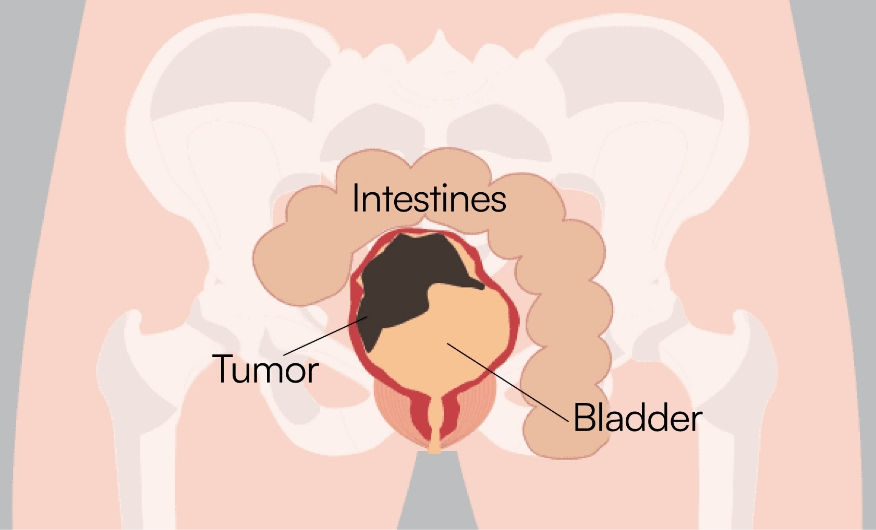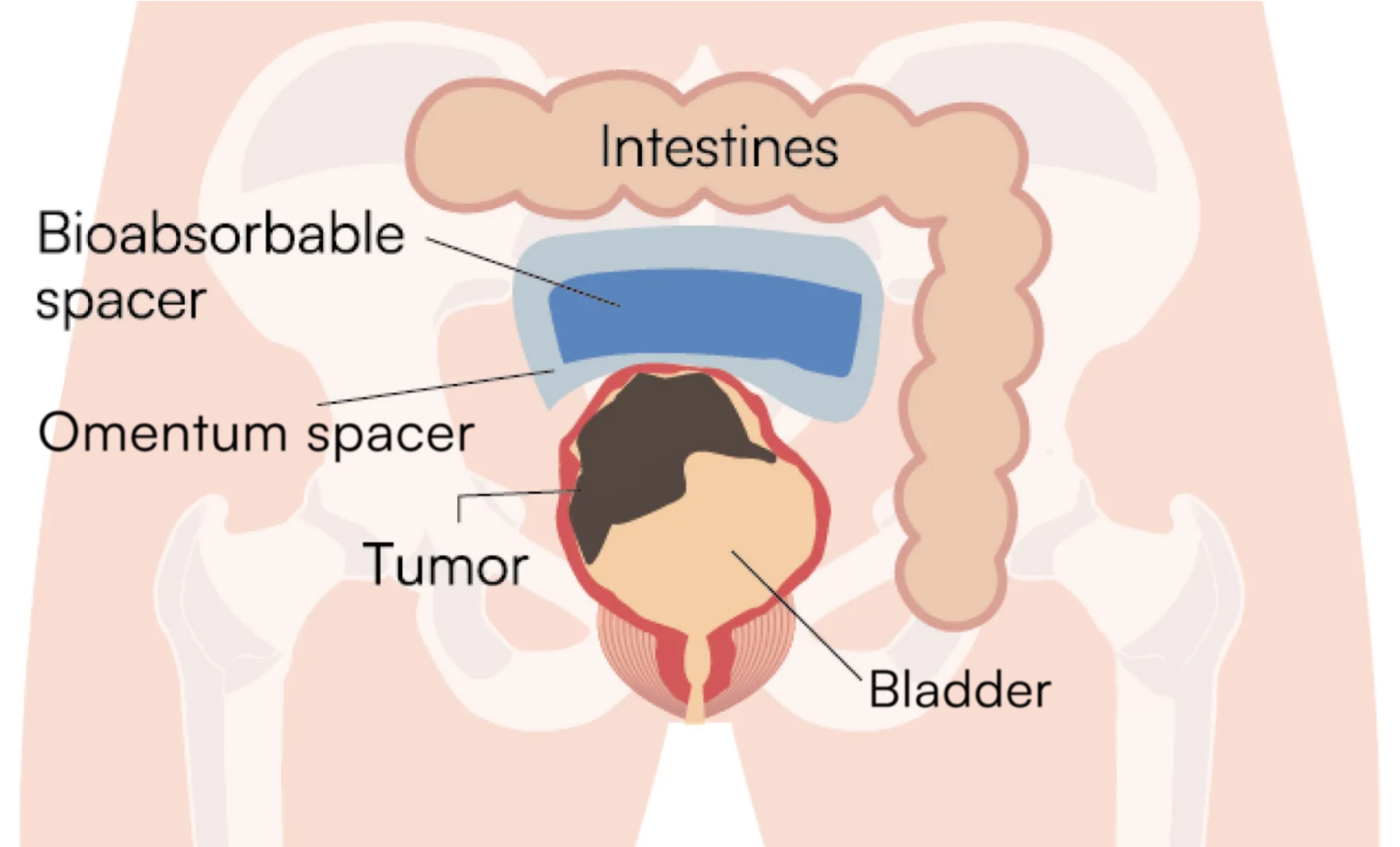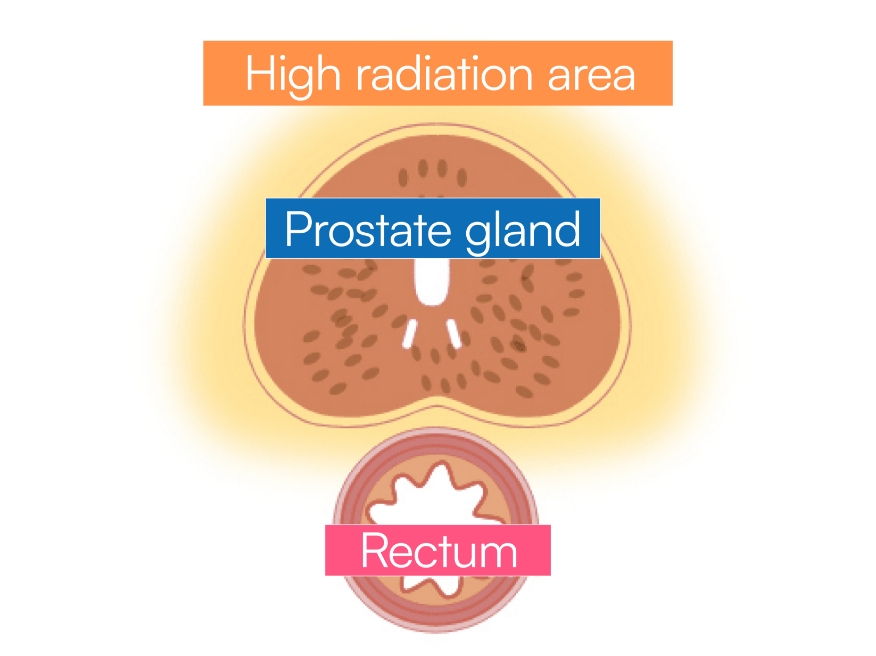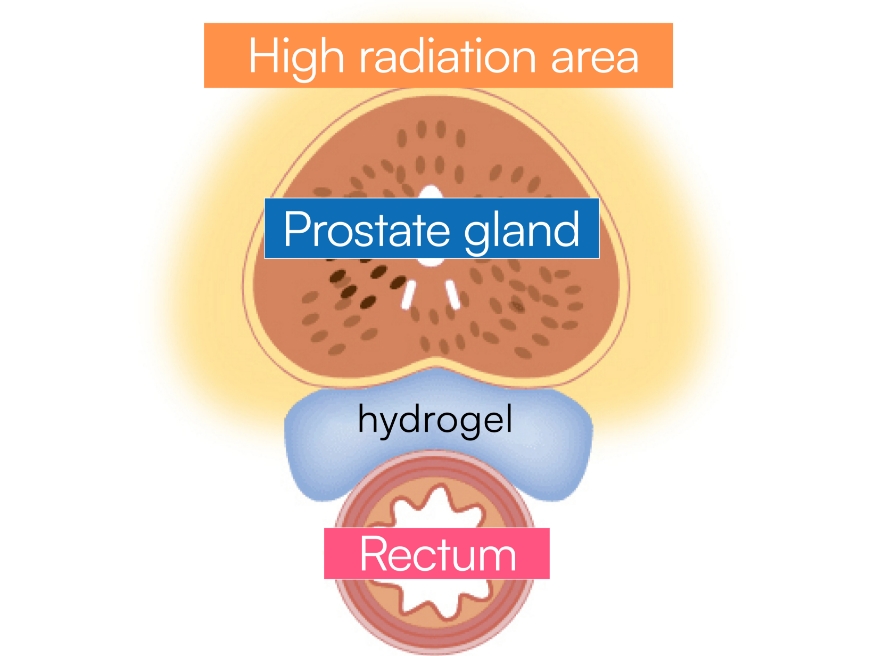Spacer
Strengths of being a general hospital
Southern TOHOKU Proton Therapy Center is located on the same premises adjacent to the Southern TOHOKU General Hospital. This reduces the burden of patients in need of treatment at various medical specialties.
"Spacer surgery" makes it possible to treat abdominal cancers
Cancers in the abdominal or pelvic regions, such as parts of the liver or pancreas, are said to be the most difficult areas to treat with radiotherapy.
This is because if high doses of irradiation hit the adjacent stomach or duodenum, there will be a risk of fatal digestive tract complication.
For these cancers, our center works in cooperation with the surgery department to perform "spacer surgery" before performing Proton Therapy. During surgery, the patient's own fat (omentum) or a nonwoven bioabsorbable spacer that is absorbed by the body about six months after surgery is inserted between the cancer and the digestive tract to create a space, preventing the high dose of proton beams from hitting the digestive organs.
This method makes it possible to treat cancers that cannot be removed by surgery or that have not been adequately treated by radiation before.
-

Before
-

After
Short-term Proton Therapy after spacer implantation for prostate cancer
Proton Therapy for prostate cancer has the advantage of having a lower risk of side effects such as urinary incontinence and sexual dysfunction compared to surgery. However, there is a possibility that the proton beam may hit the rectum adjacent to the prostate during treatment, causing rectal bleeding. To avoid this, it is common to perform proton beam irradiation 37 to 39 times in total with a lower dose per session. At our center, we are working on short-term Proton Therapy, which reduces the amount of proton beam that hits the rectum by performing a spacer placement procedure to create a space between the prostate and the rectum, thereby increasing the dose per session.
This procedure allows Proton Therapy to be performed in 21 to 22 sessions. Spacer placement is performed on an outpatient basis. A gold marker insertion to enhance precise irradiation is also performed along with the spacer placement. This hydrogel spacer is absorbed by the body six months after injection.
-

Before
-

After
Other Diseases
- Pancreatic cancer
- Biliary tract cancer
- Bone and soft tissue sarcoma
- Kidney cancer
- Pelvic tumor
- Pelvic local recurrence of rectal cancer
- Lymph node metastasis
- Bladder cancer
- Liver cancer
